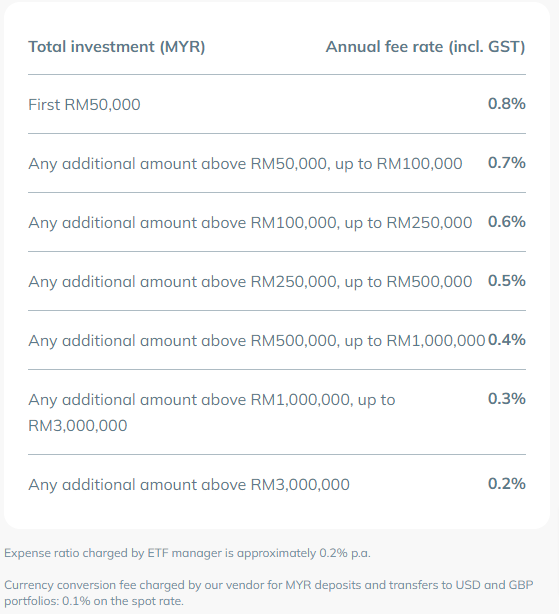StashAway is arguably one of the most well-known robo-advisors out there currently available for Malaysian investors. In my StashAway review, I’ll talk briefly about my own experience with it over the past years since 2021.
Who’s Behind StashAway?
StashAway originates from Singapore and was launched in Malaysia back in 2018. According to their About page, StashAway was founded by a team of professionals, and currently has more than 200 employees from 37 countries.
What does StashAway do?
StashAway is a robo advisory platform that helps investors invest in the markets by using tailor-made, customised allocations to global ETFs. You answer a series of questions and the app automatically creates a portfolio based on your risk profile.
What makes StashAway different?
StashAway differentiates itself using its proprietary algorithm called ERAA – Economic Regime-Based Asset Allocation.
What this means is StashAway has built an impressive algorithm that considers the macro-economic factors of different regions and countries and employs the capital via smart asset allocation. If you’d like to delve more into their ERAA method, it’s best to read in detail here.
ERAA® was built with decades of academic research and the experience of many high-profile practitioners who have managed tens of billions of dollars in their portfolios. ERAA®’s systematic approach avoids human biases, and enables the use of thousands of historical data points in each portfolio construction decision
If you’d like the TL;DR version, basically ERAA is a methodology that employs three core pillars:
- Economic regimes determine asset allocation
- Risk shield
- Valuation gaps
Of all the robo advisors I’ve reviewed, I feel that StashAway has a solid and robust methodology to explain the reason behind why they do what they do. This level of transparency is good for investors who are more discerning.
StashAway also offers the StashAway Academy which has extensive resources not only about investing but also on personal finance in general. I find that their material is quite in-depth and yet easy to understand for beginners.
How to Deposit into StashAway Account?
All transactions are done via the app. You can choose to have recurring deposits or one-off deposits based on your own preference. Funds are deposited via FPX and will be processed once SA receives it. StashAway’s recurring deposit is free and you can set as many recurring deposits as you want.
What Does StashAway invest in?
During the setup of my test portfolio, my risk setting was maxed out so my current Risk Index inside StashAway portfolio stands at the maximum 36%. At this risk profile level, here are my current holdings:
- Equities – 64%
- Real Estate – 15%
- Commodities – 12%
- Government Bonds – 8%
- Cash – 1%
The allocations under each asset classes are further broken down into different categories. For e.g. under the equities category, 39% is parked under US Equities and 25% under International equities. Do note that this percentage fluctuates based on the current state of the economy and StashAway’s own algorithm. As re-optimisation of portfolio happens fairly often, I didn’t manage to keep track of what the portfolio invested in since the start of my public experiment.
What Fees Does StashAway Charge?
Fees start from 0.8% of asset managed, and scales down according to how much money you deposited. There are also charges for currency conversion and the ETF’s own management fees.

How is My Experience Using StashAway?
I like that StashAway has a pretty active and hands-on feel to managing clients’ funds. When reoptimisation to your portfolio is taken, they’ll send an email to notify you regarding it and the reasoning behind why they did it.
In terms of user experience, I think the mobile app is really functional and smooth, and beginners should have no problem navigating the app as there are plenty of prompts in-app to guide you around.
How is StashAway Performance So Far?
StashAway is part of my public money experiment pitting 6 different robo advisors against each other started in April 2021. My StashAway portfolio came in 6th and last in 2021-2022, with a -8.73% ROI since inception.
Should You Invest with StashAway?
Barring the disappointing performance, StashAway has my confidence they’ll able to turn it around based off the team’s credentials and active management of client’s portfolios. As fees are comparable with Akru’s, there’s no reason by you shouldn’t try StashAway. The only downside is that SA doesn’t guarantee to only invest in Shariah-compliant funds, so discerning Muslim investors might want to look into alternatives such as Wahed Invest or BEST.
Hope you enjoyed this StashAway review. If you’d like to try out StashAway, feel free to use my referral link below to get your management fee waived for 6 months:
